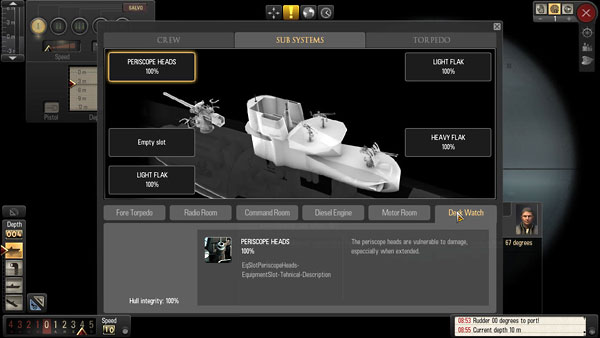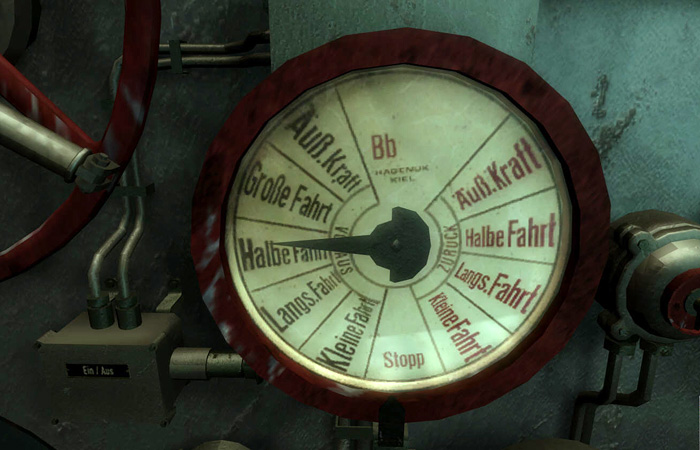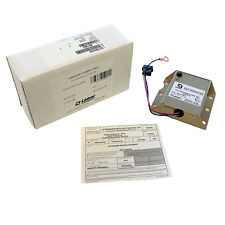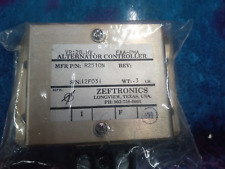 |
This commentary is a companion article to my review of Silent Hunter 5: Battle of the Atlantic, and does not necessarily represent the opinions of the SimHQ management, staff or SimHQ’s advertisers. – Tom “WKLINK” Cofield
Introduction
Controversy isn’t anything new to the simulation genre. For that matter, it isn’t new to gaming in general. Computer gaming is about pushing the envelope. Sometimes new technology and methodology works, sometimes it doesn’t. While there is nothing wrong with exploring new concepts, being “cutting edge” also carries the responsibility of realizing when something doesn’t work, and isn’t quite ready to be released to (or on) the world.
Ubisoft’s decision making in the simulation genre has been a topic of many discussions before. Granted, part of the reason they have been under a microscope is because they are one of the few major publishers that actually produce simulation titles. One reason is because they have been at the vanguard of the DRM software debate going back to their support of the onerous early versions of Starforce. After reports of damaged optical drives became too insurmountable in quantity and frequency to ignore, they wisely moved away from it and were generally applauded by the various simulation and game communities.
The Uplay Announcement
At the outset,Silent Hunter 5: Battle of the Atlantic looked to be a solid release title for Ubisoft. The Silent Hunter series has done well since its old SSI days, and the popularity of Silent Hunter 3 and Silent Hunter 4 indicated a good future for the latest version of the submarine series.
When news was released that Silent Hunter 5 was going to ship with the mandatory Uplay software, the reaction on the premier naval combat simulations web site, Neal Steven’s Subsim was similar to the reaction when….uh…. the Germans bombed Pearl Harbor. Don’t stop me, I’m on a roll.
The focus of concern was, with Uplay there is no offline gameplay. A connection to the Ubisort servers is mandatory 100% of the time. Period. All too many players, and potential buyers, were not happy.
The SimHQ Silent Hunter Forum had a similar reaction as the submarine sim faithful had over at Subsim.
Most reactions ranged from irritation to downright indignation. Some were mere shrugs. Probably the first alarms bells should have gone off when few people stated they agreed with the new software policy and while a larger number stated flat out they wouldn’t buy the game if Uplay shipped with the game.
After a series of problems, some arguably foreseeable, Uplay was rapidly reaching “Edsel” and “New Coke” branding status, and the name itself can now evoke an eyeball roll to the most objective among us.
Uplay is…
Let’s look at what Uplay is, and is not. Uplay is a “set of services that give players extra value for their Ubisoft games”. While the DRM facet has grabbed much of the news, other aspects of Uplay are much more palatable. It could be argued that the other elements of Uplay are window dressing fluffware to possibly dilute a focus on the-big-gun, but some do have a nice aspect to them. The other elements of Uplay include:
Uplay Win a gaming challenge that allows for solved in-game challenges that garner additional download content (DLC is the latest game industry buzzword, but it is really just another sexy TLA… three letter acronym).
Uplay Share is “….a great realm to post your own content, keep track of your friends, and taunt your foes — and it lives in some of your favorite games. See what you can share in-game now. You’ll find everything from profiles and leaderboards to your own good stuff like screen shots and web comments.”
Uplay Help is what you would expect. And more… or less.
Consider this from the customer help: “Error: An Internet Connection is Required to Play This Game”.
Or these from the Online Services Platform Q&A:
Q: Can I resell my game?
A: Not at this time.
Eh…?
Q: Will customers need to upgrade their Internet connection to broadband speed?
A: No. We’ve made sure that the game is playable even with the lowest (A)DSL connections.
Notice it doesn’t say “dial-up, flaky, or intermittent connections.”
Q: What will happen if I lose my Internet connection when I play the game?
A: If you lose your Internet connection the game will pause while it tries to reconnect. If the Internet connection is unable to resume, the server will have stored your last saved game and you will be able to continue from where you left off once your internet connection is restored.
Game progress (saved games) is stored on the server. The argument is, so you can go on another computer and play. But what happens if this happens?
Uplay Shop where you can “download new and classic PC games directly from Ubisoft”.
Now what is more curious is, the homepage of Uplay has “beta” next to its title. So the support services must be in beta, but not the DRM, right? Right?
Release Day
So Ubisoft did indeed release Silent Hunter 5: Battle of the Atlantic with the Uplay DRM. Many of us have been waiting in high-anticipation for SH5, so we held our breath and bought the game.
In addition to Silent Hunter 5: Battle of the Atlantic, they also released the Uplay enabled Assassin’s Creed II. The original Assassin’s Creed was a hit for the company and there were high hopes for the sequel.
We were assured that Silent Hunter 5: Battle of the Atlantic would run well and that the online component would be smooth with no hiccups. Ubisoft was ready to meet the demand we were told.
It wasn’t.
Within a week a pair of attacks on the Ubisoft servers rendered both Silent Hunter 5 and Assassin’s Creed II unusable by (depending on whose numbers you hold accurate) some portion of the purchasers. To add insult to injury, the Uplay system was rumored to be hackedwithin a week of release to allow offline play. As of this writing, there are more recent reports of the same.
In essence the end result of all of the money spent by Ubisoft, of all the potential ill-will garnered from potential buyers of games, and all of the efforts of the poor development team ended-up as moot. And by-the-way, we truly do sympathize with the poor developers who saw their work saddled with this protection software.
Nobody “likes” DRM, but…
I am not going to get into theories as to why companies decide to proceed with such invasive schemes other than the obvious — to protect their intellectual property by making life difficult for software pirating. I am also sure that there is an assumption that people won’t mind this inconvenience as long as they get the product they anticipate. In all honesty, the reasons don’t matter.
Don’t get me wrong. I am not completely against DRM nor do I think that companies like Ubisoft don’t have justification in trying to protect their assets from software theft. Yes, there are some people that think any kind of protective software is unacceptable, but most gamers realize that is not practical. Even in the 90’s, when software piracy consisted of a burned CD handed out to buddies, there were CD checks and passwords that had to be put into place before a game would install.
SimHQ has a longtime policy of not allowing pirating techniques or links to be posted. SimHQ has never posted a position on DRM because the staff varies in opinion as widely as the various sim communities we serve. We strive to be a good sim community.
But when the software that is supposed to protect against piracy becomes so intrusive and cumbersome that it interferes with the ability of the legitimate purchaser to play the game, then I have to draw the line. Uplay has crossed that line.
First, contrary to popular belief inside corporate hallways, not everyone is constantly connected to the Internet one hundred percent of the time. Laptops today are increasingly powerful and are more than capable of handling most modern simulations. In fact, my laptop is just as powerful as my desktop. It actually runs Silent Hunter 5 as well as my desktop system. But since the laptop is designed for mobility, it often isn’t connected to the Internet.
In addition, proponents of the online requirement scheme seem to forget that a lot of us sit in airports or fly long distances on aircraft. Unless you are someone that can afford to pay for a wi-fi at the airport or on the plane (when they’re available) you are locked-out of your game. While its unusual to find a premier hotel that doesn’t have Internet access these days, its not a given. I think the worst thing that a game publisher can do is lock themselves out of a potential market.
What is the most distressing to me is that anyone in the military of the coalition countries planning to deploy to a hot zone will end up not being able to play their games. For those that don’t know, I have deployed overseas to the Persian Gulf and trust me, plugging a personal laptop into a military network to play a video game is not an option. That means that if Ubisoft continues with their current plan to release all new titles with the mandatory Uplay DRM, then thousands of potential customers — the young men and women of the armed services that tend to purchase video games in fairly large numbers — will be locked-out. I know a lot of these soldiers and theytake laptops overseas with them, and computer gaming is a great source of needed relaxation. Was this an oversight, or did the presentation of Uplay to Ubisoft senior management not believe this was a consideration?
The second problem I have with these systems is more personal. Complicated and intrusive DRM schemes infer to me that the player of the game is a thief until he or she proves that they are a legitimate owner of the game. That wouldn’t necessarily bug me if the verification was only once after the installation of the game but having to log in every single time is insulting.
What is even worse is that under some of these systems legitimate buyers of the game have been locked out of playing the game while hackers have maintained access. If a company decides to go with a scheme like this then there is ABSOLUTELY no excuse for that same company to fail to provide access to their game servers. I understand that outages occur but if a player’s Internet access going down is no excuse then the company has no excuse for not making sure that the same connection is available for every purchaser of the game.
If complex simulations like Silent Hunter 5 fail then it seems less likely that other games of its type will be developed by major labels. It is much easier to develop a game for a PS3 or an Xbox 360 than it is for a computer and failures of such titles will continue to drive developers into consoles.
More scary, considering some of the upcoming titles published by Ubisoft
Okay, Tom. You can complain but what’s your solution?
Here it is plain and simple. No system put in place to prevent piracy of a game should prevent legitimate users from playing the game. No system should penalize legitimate users of the game simply because they can’t be connected 24/7 to the Internet. Under no circumstance should the legitimate user of a game be made to feel like a suspect when they decide to fire up a game that they legitimately purchased.
Like I said before, I don’t fault a company’s desire to prevent theft of their property. Unlike some folks I am willing to put up with some inconvenience to prevent illegal copying of games; as long as that inconvenience is transitory. As a gamer I would prefer no DRM but that probably isn’t realistic considering the losses some companies have reported.
My advice? Well if we must have DRM, then…
First, follow the success of the success stories. Digital Combat Simulator (DCS: Black Shark, Flaming Cliffs 2) and Gaijin Entertainment(Wings of Prey) have recent titles with a protection scheme called FrontLine ProActive by Protection Technologies. Surprise — Protection Technologies were the creators of Starforce (!) but have now provided a solution that seems to be less hassle than any other DRM solution. Neoqb’s Rise of Flight started off with a mandatory full time connection, but in the past few months they have dropped that requirement for all but their Career Mode and obviously, the Multiplayer Mode. Smart! Recently Bohemia Interactive’s ArmA 2 was patched to v1.05, and with the patch came the removal of the disk-in-tray check. They knew the vast majority of their sales had already been achieved and it was their way of thanking the community. Others such as TK’s Third Wire titles never have had DRM, but rather depend on a download ID number to ensure authenticity.
Next, software companies have to take a good, solid look at what they are selling and what the target market really is. This means that maybe companies should look less at how to prevent hacking and more on how to convince people to buy their games. Let’s face it, someone willing to steal something like a computer game isn’t necessarily going to be convinced to spend their money if the game is difficult to crack. Instead, they will skip the game entirely or wait for a crack to come along. Either way the company probably will make little money from such a person.
All companies are going to have to look closely in the future when it comes to DRM software and decide what the cost really is for these kinds of programs. In the end it may truly not be worth the time and the money spent doing damage control due to intrusive DRM schemes — especially when it is not necessary and better, reliable solutions are already proven to be available.
Other SimHQ Articles on DRM
Discuss DRM in our dedicated forum for the topic here.
















